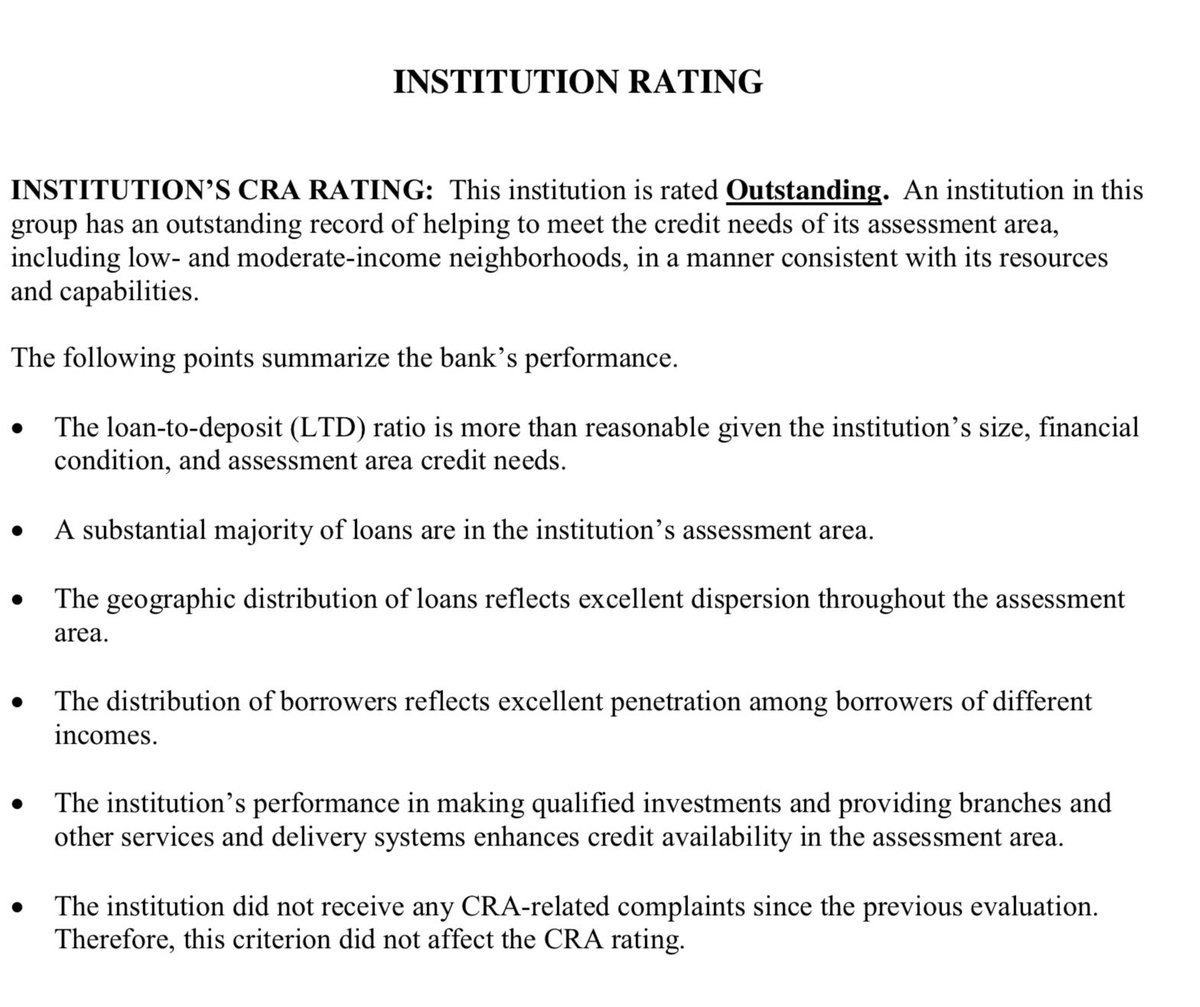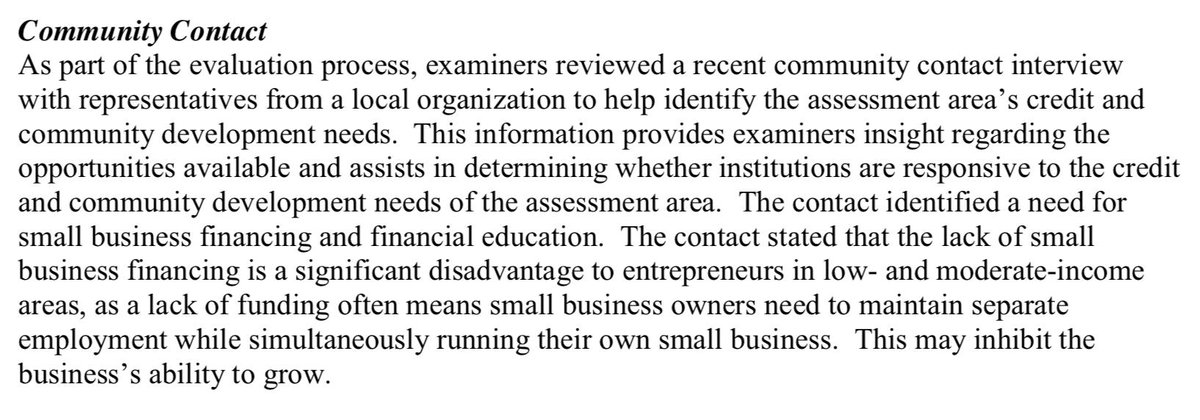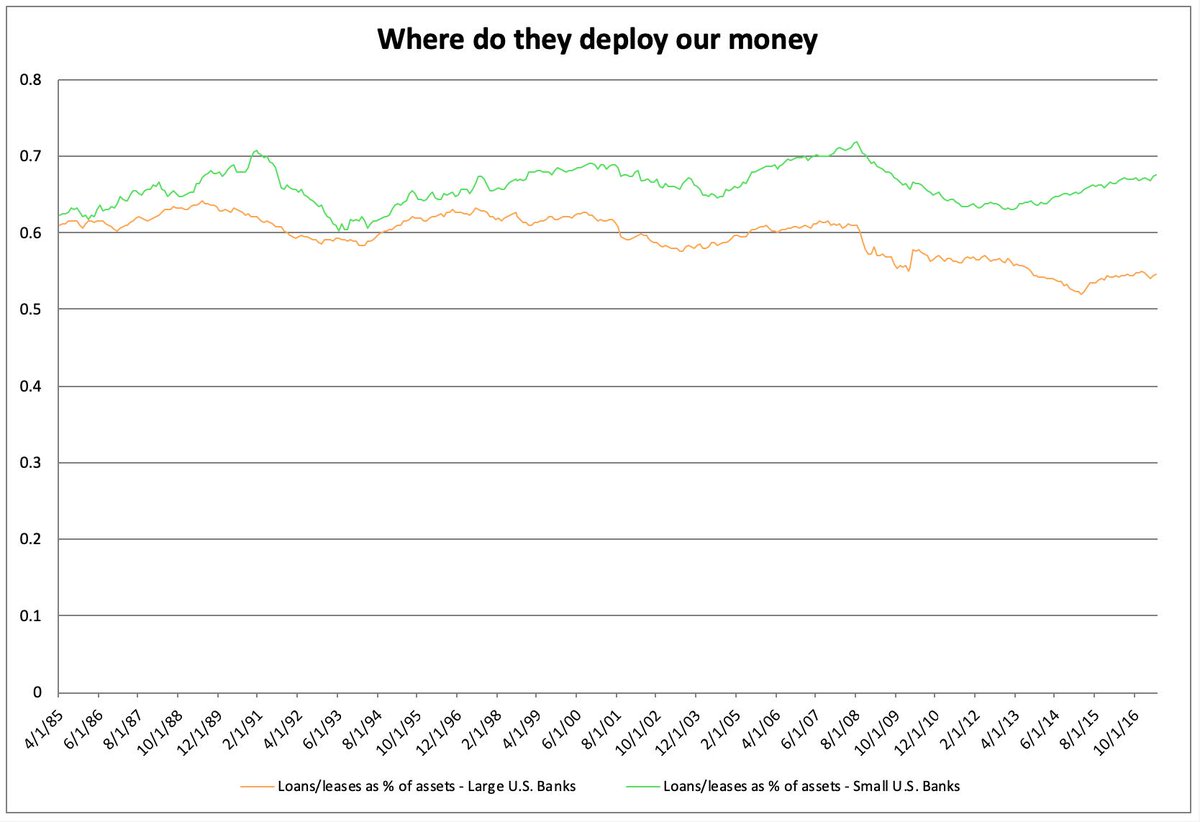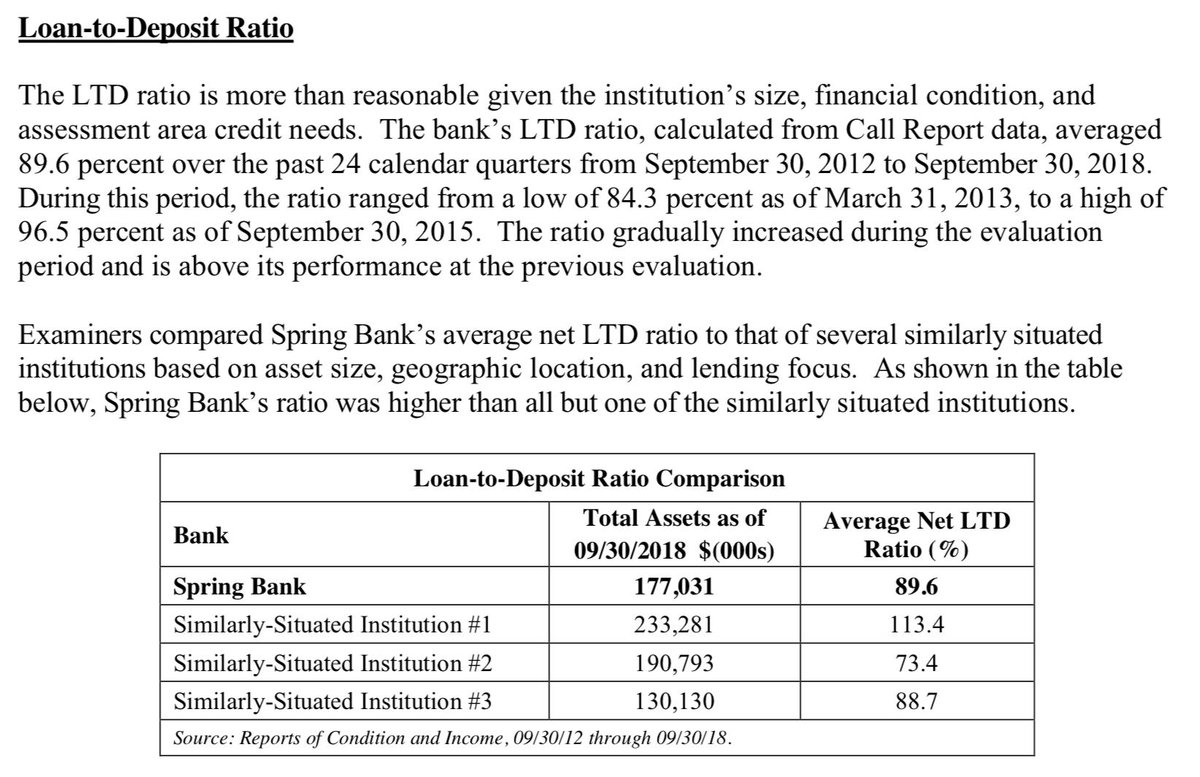2019: fuqua.duke.edu/duke-fuqua-ins…
2015: federalreserve.gov/econresdata/no…
2010: communitycapital.unc.edu/research/cra-d…
2008: reuters.com/article/usa-fe…
2008: money.usnews.com/money/blogs/th…
The CRA DOES NOT cause financial crises. Full stop.
I don't know about you, but I have never, ever come across a community where banks are meeting all credit needs.
If you're like me, you get a little excited when the @FDICgov sends out its quarterly list of banks examined under the CRA in the past three months.

@FDICgov) where the bank is headquartered, also reach out to "community contacts" whose feedback remains anonymous.

Let's start with something comprehensive, the bank's loan-to-deposit ratio. Examiners want to know what proportion of deposits are being loaned out instead of placed in more exotic investments.
At Spring Bank, that ratio is 89%.
89 percent!!!!

















